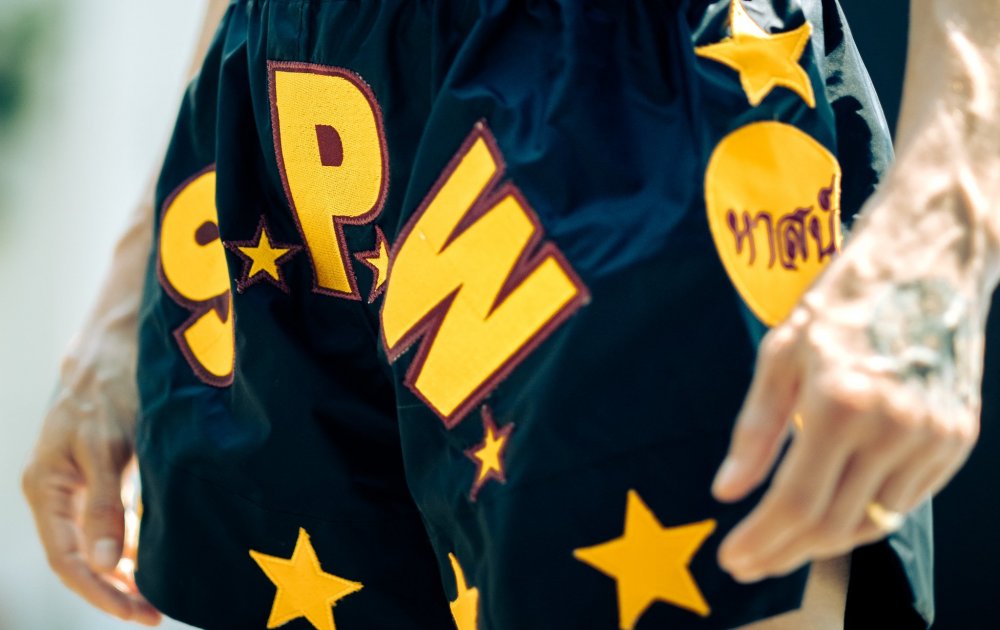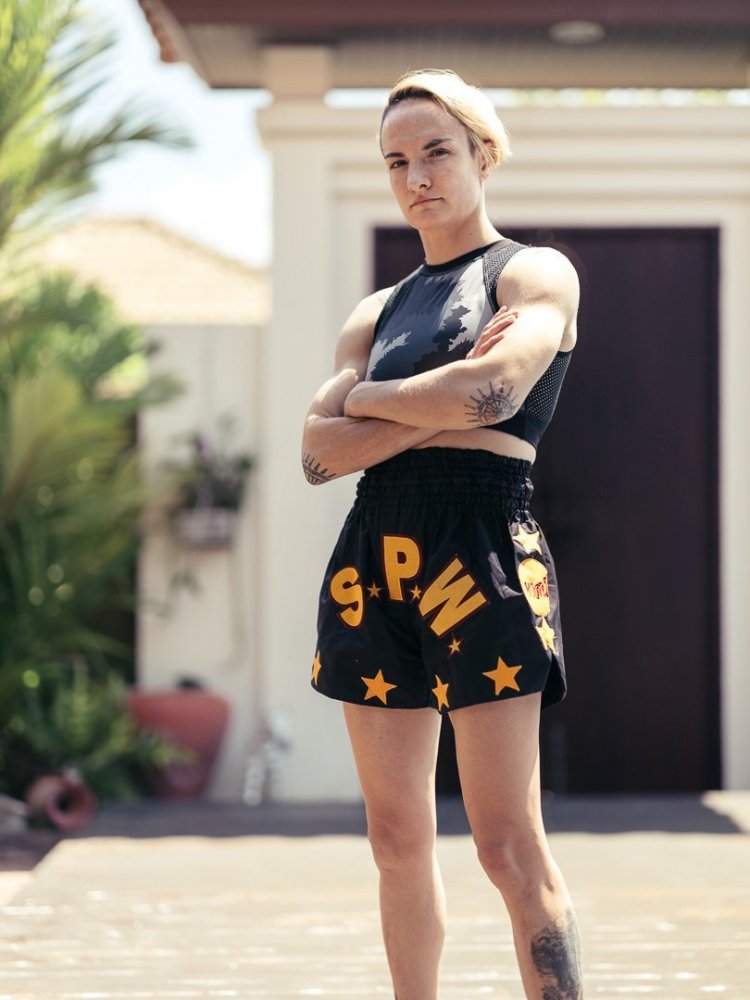-
Posts
2,264 -
Joined
-
Days Won
499
Everything posted by Kevin von Duuglas-Ittu
-
It's very hard to tell about these kinds of questions because a big part of this goes to what your training opportunities are (sparring, etc), and how coaches feel about your stances (ie, the kind of support you might have). But, all things being equal, I don't think your forward eye would matter that much, assuming you are not blind and can detected motion and shapes easy. Your eyes probably work together, you aren't reading letters off an eye chart. You seem to feel physically confident in both stances. I've always thought that if a fighter had the opportunity they should work towards switching, learning to use their strengths from either side, and hide their weaknesses. It increases a need to read the situation and the opponent, and allows you to attack both edges. But, this is really advising from extremely far away from whatever you are going through. One thing you might find interesting, if you are a patron, is this 2 hr video which traces how the legend Karuhat changed Sylvie from orthodox to southpaw, so she could correct some bad habits, and also put her strong hand in the lead. It may give you ideas for yourself: https://www.patreon.com/posts/karuhat-sor-3-to-13300833 . Karuhat was a switching fighter.
-
Thanks for the suggestion. We can't do that merchandise right now, but if anyone wants to donate to his family we can send the money to them. This is our crowdfunding site. We cover all transfer fees. Just send me a message saying how the donation is for: https://www.indiegogo.com/projects/support-muay-thai-legends-in-the-covid-19-shutdown#/
-
Here is Dangkongfah posing with her belt the next day with Kru Diesel who helped her train a bit before for this fight out of Fight House in Singburi. Dangkongfah a week before her WBC fight also fought in the National Amateur Muay Thai tournament, a yearly event only among Thais, and took Silver in her weight class.
-
One of the more compelling female Muay Thai fights happened this week, a WBC Super Flyweight, Muay Thai World Title fight between Souris Manfredi (France) and Dangkongfah Soujainoi (Thai). The fight itself was action-packed, and also pitted quite different fighting styles and skill sets against each other, enough to make it interesting on its own, but perhaps even more so, the stories behind the fight and what it meant brings interest and thought to the match-up. I'm writing here to call in a few more of those details to bring more attention to the fight, and its place in the development of female Muay Thai. Sadly, at this point in female Muay Thai fight history even big fights like this just get an Instagram post with a belt, a few shares and vanish. Instead, there are deep stories and lives that come together in these fights worth writing about. The importance of the fight may start here, with the WBC world rankings of female fighters (below, the top 10 listed in the weight class of this title - unfortunately due to an update typo Stamp is listed twice). The WBC over the last 6 months or so has been working hard to develop a world ranking for female Muay Thai fighters with an international scope in mind. It's extremely hard to grasp Thai and western, and Asian female fighter fight scenes in a single list. They are so diverse, and the Thai landscape changes so quickly, it has felt like a Herculean task to even come close to something fair, timely and accurate. The WBC has thrown all its effort into this, so much so it seems that the competing WMO has followed suit and attempted their own rankings recently. The WBC's is here, the WMO's is here. It's actually good to have competing orgs attempting to build pictures of female fighting excellence because it's so hard to do. As someone close to the pulse of female Muay Thai in Thailand I can see where these rankings can fall short, simply because logistically you have to rely on a select few as advisers, people who are in the game, and each will have their own political alliances, fighters they necessarily are connected to. It's just the reality of rankings as they are very difficult to create, and organizations that work hard to make and maintain them deserve great credit. With two organizations creating rankings though it helps fill in the gaps any one might have. In any case, this was a huge fight in the context of the WBC's effort. They had already had their first WBC belt fight between two Thai female fighters, Sanaejan and Buakaw, with Sanaejan winning the belt at Mini-Flyweight, a fight fought in the Lumpinee parking lot improvised studio due to COVID restrictions - otherwise it would have been the first female fight in Lumpinee Stadium itself, an epic moment in Thai history - the first fight IN Lumpinee Stadium has been scheduled, read about that here. This fight between Souris and Dangkongfah represented the very first to reflect the wide-scope goals of the WBC, the international aims, as it pitted a very solid, experienced fighter from the west vs a very solid, experienced fighter from Thailand, top ranked, bringing the two worlds together. One can get the feeling that these preliminary rankings are in part assembled in order to put on these kinds of fights, for instance opponents can suddenly be added to the Top 10 rankings at the last minute before proposed matchups, but the reality is that we have to start somewhere. We have to start with a picture of the best, and then the best can start fighting each other and determining a truer sense of what an accurate ranking might be. This is exactly that kind of fight. It's the first time under the new WBC ranking system that western and Thai well-known, acknowledged fighters faced off, to create a real hierarchy, and this is exciting stuff. You can see the fight here below, an edit from Dangkongfah's corner Facebook stream: There's more to this match up than meets the eye too. There is a history between these two fighters, and for Dangkongfah a really compelling story that has covered maybe the last 5 years. If I'm not mistaken, Souris had beaten Dangkongfah several years ago in Khorat, in a fight that Dangkongfah protested as a dubious decision. This was earlier in Souris's development as a fighter, when she was with her coach Charleton in his gym in Khorat (both fighters were local to Khorat at that time). They were way off the beaten path, training and fighting away from the bigger shows that people in the west hear about. It's very hard to go your own way in Thailand, so serious props to both of them, (forgive me, as close as I follow female Muay Thai, the details on this are a bit muddy, I'm just trying to draw a broad brush). Surely this victory was a meaningful one. Dangkongfah was, I also believe, simply a young circuit festival fighter at the time, and I'm guessing was up in weight, so likely had that advantage. In fact Sylvie had a remarkable experience with Dangkongfah several years ago when fighting up in Khorat. A (then) pudgy young fighter who was drawn to Sylvie for some reason inserted herself into Sylvie's corner (Sylvie had no corner for this fight and just collected one from the local krus on the mats), and helped urge Sylvie onto victory. You can see clips of this here. We've had some pretty amazing experiences in Isaan, but finding this assertive, confident girl in support may have topped them all. She was full of vitality, confidence, a kind of magnetic enthusiasm. In fact, after the fight she told Sylvie that she wanted to fight her, "just for fun." Sylvie just laughed. Dangkongfah was 16 years old (looked 14 to us) and we guessed close to 60 kg (Sylvie is consistently around 46 kg). You can see that fight and her in Sylvie's corner here. Dangkongfah had won her own fight fairly spectacularly, earlier on the same card. In any case, it introduced us to this incredible energy of a girl. Maybe a year or two later we heard that Fairtex had taken in Dangkongfah, a bit after they had taken on Stamp, starting their commitment to develop a female Muay Thai and MMA fight team. This was in the very beginning of it all. I don't want to be hard about it, but just to generalize from talking to others close to the situation, at the time the feeling seemed to be that Stamp was the real, serious prospect. Stamp was maybe a top 5 female fighter in her weight class in Thailand at the time, coming off a difficult, somewhat blowout loss to Phetjee Jaa, but beating Sylvie at 48 kg. Dangkongfah was instead an overweight, Isaan festival circuit fighter, a funny girl, who was taken on in a different way. There were stories of her being without means of support, I believe, though I'm not sure how much that was so. Her father is the famous fighter Kongfah, for whom she is named. It's enough to say that it may have been a bit of a feeling of charity and generosity in how she was taken in at this early stage of their female fight team, an out-reach from the Fairtex side, not expecting a star prospect. She and Stamp were the first two female fighters of Fairtex. Stamp then was molded into a ONE Championship superstar, and at some point Dangkongfah, having worked very hard to get into significantly better shape while there, left Fairtex. It's difficult to describe this position she was in with enough force. Thai female fighters until a few years ago, had very few career opportunities by the time they turn 18. The best female Thai Muay Thai fighters were all 14 or 15 when they were fighting as prize-fighters very frequently, in the circuits, developing great skill and game-finesse, but once they hit about 16 everything pretty much starts to shut off. You could join the Thai National team and be awarded big money from the government if you get Gold at IFMA World Championships. You could maybe occasionally fight a high-profile fight for a big dermpan, but your training inevitably tails off, your fight opportunities tail off. When Dangkongfah left Fairtex (and I don't know the circumstances of that), she was literally looking at the end of opportunity. She was not that developed in terms of skill, but certainly rich in experience. She was not the best circuit fighter in Isaan, like someone like Loma was. She had just left a huge name in Fairtex that was at the cusp of investing lots of money, and lots of will into building and promoting Thai female fighters. Fighters like Wondergirl and now Dokmaibaa have since joined the team. And Stamp took off like a rocketship, not only as a fighter, but a promoted fighter with a prominent fight program invested in building her name and career. Dangkongfah stepped out of that wake, into what really might be expected to be Muay Thai oblivion, for a Thai female fighter. But...fueled by the example of ONE promotional success, when Channel 8 broke from its MAX Muay Thai contract they started their own version of MAX, with two weekend shows in Superchamp and Muay Hardcore. Whereas MAX had barred women from the ring (Sylvie is one of only 4 female fighters who ever fought in MAX Stadium), the Channel 8 fights did the opposite. They took the lead from ONE and made female fighters, in fact it was Thai female fighters, their headline stars. First, it was Sawsing, a natural star given that she had long been one of the best female fighters in Thailand, but then, interestingly enough, they took on Dangkongfah as a headline fighter as well. From the outside, it would seem like they plucked her out of nowhere. She was not riding a long wave of success, at least not outside a very local scene. She was just an Isaan fighter who hadn't fought very much recently (because she'd been at Fairtex) but with a big heart and energy. But, she matched the Entertainment Muay Thai promotional model perfectly. I've written a lot about how worrisome the Entertainment Muay Thai rulesets can be as a threat to traditional Muay Thai, but...they are also an opportunity. And Dangkongfah thrived under the format. She ascended. What I really love about her as a fighter is how much she defies the passionate westerner perceptions of Muay Thai excellence. We have fantasies of incredible crispness and balance, the effortless gliding across the ring, the impression that you are above the fight through skill and acumen. There are so many examples. You look at Dangkongfah and you see none of that at first blush. But I'll tell you, she is a fighter who has earned with experienced qualities that are intimately Thai, those of the Thai fighter. It's just not the things that appear easily to the eye. It isn't demo-perfect Muay Thai. It's the Muay of experience, it's "bones", as Thais call it. It's the Muay of prize fighting. Yes, what makes Thailand's Muay Thai so special IS the beauty of techniques...but beneath those techniques is another beauty. It's the beauty of the experiences of fighting itself, since a young age. What is so cool about Dangkongfah as a fighter is that because - unlike many Thai female fighters who do express quite beautiful Muay Thai - she does not have those keynotes that people look at for symbols of excellence that in some Thai female fighters can be a kind of "point fighting", she has the other excellence, the excellence of feeling a fight, directing a fight, knowing how to win a fight, and it shows through. This is not a knock on other fighters, many technically crisp fighters also possess this fight knowledge, but her particular mix of fighting skills allows this very special quality of hers, to shine. The "bones" show. It's not easy to see if you aren't looking for it. So, a bit of digression to bring it out. Many not familiar with Thailand's traditional Muay Thai scoring don't really grasp the importance of a narrative scoring model. You can read more about this here: The Essence of Muay Thai – 6 Core Aspects That Make it What It Is. The narrative model means that you have to tell a story in a fight. Progress in what you reveal, in the tempos and momentums that you choose, and they mean something in terms of what has already happened in the fight. Round 3 means something in relation to rounds 1 and 2. Round 4, in relation to round 3. Dangkongfah has been a prize fighter under narrative scoring since a kid. It's not "damage" or calculated "points", it's how much you control the narrative of the fight. It's how much you dominate, and WHEN. Everything builds to a story of your dominance. This is what she is really good at. And you'll see it in this fight. She has a feeling for when and how. It doesn't matter if punches flail out and are ineffective at some point, or if she momentarily loses balance, it's about when they land, and when she's rock solid. When the car gets rolling, she knows how to push. A lot of Thai female fighters will not risk the loss of control (beauty) to get to where she wants to get. She's very unlike many Thai female fighters that ascend to a wide-spread awareness, and it is easy to underestimate her. She is all the guts and IQ that come from fighting as a prize fighter since a kid. If you want to know what she's about, watch her in rematches. She is ridiculously good at rematching an opponent. I've watched her fight many times. Sylvie has fought her, I've seen her fight twice in person. She has a focus and will in rematches that just controls the game. She escaped with a lucky (probably biased in her favor) draw decision vs Dani on Channel 8, and just ripped her in the rematch despite giving up what seemed like visible size. She beat one of the best fighters in Muay Thai on Channel 8, the brand new ONE Championship Champion Allycia Rodriguez (who had just defeated Stamp for the title), rematching her for the biggest side bet of any female fight in Thai history (1 million Baht) and the Thailand title belt, and totally controlled the fight against someone most would say was technically superior. (At the time Dangkongfah had been using social media to argue that she deserved to fight for ONE, the promotion which made Stamp a star, and then out-right beat their brand new champion, who had defeated Stamp for the title... it was a solid argument.) She firmly beat Souris on Channel 8, in a 3 round rematch from their disputed Khorat fight, and so this WBC fight was again a rematch. Anytime I've seen her rematch she's dominated, almost magically. It's not an accident. And, this fight was coming off her first true loss in years, having lost to Barbara Aguiar on Channel 8. She had something to prove. It was a pretty extraordinary performance, this WBC title fight. Souris Manfredi, though she does not have wins versus other WBC ranked fighters (that I'm aware of) has nonetheless taken on HUGE challenges as a fighter, with tough-fought losses to Phetjee Jaa in Thai Fight (maybe the best female MT fighter in the world), a big weight discrepancy vs top fighter Sawsing on Channel 8 and against Dangkongfah herself. She went to Myanmar to fight and win a Lethwei title, and has fought and won in in a Bare Knuckle promotion in Thailand (a promotion her coach just announced she's now pursuing full time, leaving Muay Thai permanently). Stylistically this is a great fight, because just watching Souris you can see how hard she's trained in specific techniques and positions. She's crisp, sound and exudes discipline and commitment. For instance she has lots of early success with nice straight punches that seem to pop through a seemingly porous guard. She looks superior. She presents Muay Thai in a highly trained, well-defined way that is clearly visible to the eye. You can feel that she's worked extremely hard at developing herself. Because we in the West kind of exoticize the precision of Thailand's Muay Thai, we work very hard at tracing those perfect lines, and capturing them in combination. What is so interesting and cool about this fight is that Dangkongfah, somewhat unusually, doesn't have that supposedly "Thai" precision. A legend we know privately wrinkled his nose at Dangkongfah's victory over Alycia, preferring the latter's technique even though the win was clear. A coach might look at her on tape and think: she's full of holes, she's easy to pick off. You can make game plans, and be right about it all...but just try. She has something deeper than technique. She has a feel for the game, she's been a prize fighter since she was young. She made this in the festival fight circuit of Isaan, where "pretty" isn't really what it's about. It's about taking that sidebet when its up for grabs, controlling the narrative and it's about heart. It's a deeper lesson of what fighting is. It isn't picture-book. The Muay Sok legend Yodkhunpon once told us of growing up in the fighting rings of his boyhood Isaan "points are for Bangkok". Drawing from another sport, in baseball you talk about pitchers who have amazing "stuff", and then you talk about pitchers who know how to win even if they don't have great stuff. Dangkongfah is that kind of pitcher, she knows how to win. The final context of this fight is even more remarkable. The fight took place in an improvised ring at the Fairtex Training Facility in Pattaya, the very same place she was the Cinderella step-sister of now world famous Stamp. In fact everyone in attendance to this title fight watched Stamp go through training a few hours BEFORE this fight. One cannot help but feel Dangkongfah herself took into the ring with her that contrast between Stamp and herself, the one who Fairtex embraced and built and she herself who went her own road. Here she was fighting for the WBC World Title in the very same space she was in when she was a pudgy funny-girl from Isaan. Finding herself there in that ring in Fairtex was an unexpected twist of fates. This World Title fight was actually supposed to be the showcase fight under the Lumpinee banner under GoSport's new push to create a different kind of promotion for Lumpinee Stadium. A New Lumpinee. When first proposed I imagine there may have even have been a chance that this fight was going to be the first ever INSIDE the ring of Lumpinee (which has at the time of this writing not happened yet but is scheduled), and maybe even for a WBC belt and a Lumpinee belt (early promotional material from GoSport had both belts advertised on female fights). But, as it happened, GoSport and the WBC had a disagreement, the contract for the belt experienced complications, and the fight found itself on this promotion, Full Metal Muay Thai, put on in the Fairtex facilities due to COVID restrictions. It's enough to say, this fight took a swerve from a possible pinnacle place in Muay Thai history, to a place of personal importance for Dangkongfah. Not Lumpinee, but at Fairtex where she once may have been underestimated. This is the underdog girl. Sawsing, who had come with her family and team of Thai female fighters to support Dangkongfah, posted this photo of the WBC belt on the hood of the car they drove down in from Singburi, that's how special it was for them. Interestingly enough Yannick, a Frenchman who owned Warriors gym in Pattaya, is the generous man who held the contract for the belt. He had purchased the belt (a significant expense) because he felt felt that it was ridiculous that a fighter who becomes World Champion does not get to keep the physical belt in Thailand. Many do not know this, but this is true of Lumpinee belts, Rajadamnern belts, pretty much all belts. So he in real generosity also purchased the belt itself to go to the winner. One imagines he hoped that this belt would go to Souris Manfredi, who also from France. Instead it was wrested away by the festival fighting girl from Isaan, the remarkable, incredible Dangkongfah. If you want the latest in Muay Thai happenings and things to inspire: sign up for our Muay Thai Bones Newsletter
-
Unfortunately he deleted the live stream (maybe so his fighters can't be studied). Sylvie put it up as it was streaming. If you follow the gym they do stream fairly often. It would really depend on your skill level, and your training needs. But no, at this date it doesn't look like fighters close to your weight. But, if you are there for technique Kru Thailand is ON POINT.
-
Reading the updated and revised list if I could just add my own twist to it all, I think Kru Thailand's gym is the most fascinating gym of all of them. This is something we experienced in other gyms that is really special. When a gym is building a class or two of Thai fighters (age groups or weight classes), and the fighters are all being directed by a Golden Age serious kru, this is a beautiful thing to be folded into if you can. It's never sure how long this will last. One year, three years, its hard to tell, but there are special times in Thai gyms that are not organized around westerners, when if you are there you get a very different experience. This would be a gym I'd want Sylvie to train at if she were living in Chiang Mai. It's just a vibe we felt while filming there, and something you can see in the live streams that Kru Thailand puts out. This of course is not a blanket recommendation, because people are at different levels, have different needs, have differing tolerances. It's just based on the feeling I recognize from that gym's example. Take it for what it is worth.
-
Sylvie has started voicing commentary on a stretch of fights from 2017 which did not get a commentary yet. Below are the last two she's published. Just watching these fights is incredible for me, because of just how far off the map of regular fighting this is. She was fighting maybe 35 fights a year, and at this point she was facing very large opposition, multiple weight classes up, including some of the most accomplished fighters in Thailand. What is more remarkable than anything about these two fights isn't that they happened, but that because she fought so much and faced pretty much anyone promoters would put in front of her, she didn't give it a second thought. This is just a run-of-the-mill week that happened to have the 118 lb Northern Thailand Champion and the 112 lb WPMF World Champion, back to back, 3 days apart. Any of these fights would be a fighter's apex memory, but for Sylvie this is just the regular rough terrain she climbs. For those that don't know, she's a 46-48 kg (walk around weight) fighter giving up 25 lbs and 15 lbs. It's also amazing to have her perspective on so many of her fights. You can see all the video of her fights on her Complete Fight Record page. Any fight # that is underlined and in yellow is linked to the video and many of these are commentary video.
-
This as a lengthy answer I posed on Reddit in answer to someone who was attempting to get ahold of the greatness of Samart. He had read some articles and seemed to keep coming up against repeated appeals to his "IQ" and lots on his side teep. As easy as it is to admit or even claim that Samart is the greatest, because so much of his career is unrecorded on video, his celebration does sometimes feel a bit vague. This was my take: The greatness of Samart has a kind of mythological quality to it, as there is almost no footage of his fights in his prime. This means that we kind of fill in the hole in the historical record with his projected greatness. In boxing history this happens as well, you can hear very knowledgeable people talk about Harry Greb (1920s) with reverence, taking him to be as great as anyone who ever fought, with no fight footage. The story of Samart's greatness kind of flows from a few directions. First of all, its about when he fought. He changed the game as it transitioned from the Silver Age of Muay Thai to the Golden Age. I write a bit about this here, he MOVED like nobody else, maybe before or since, but was kind of the first to do it: This gives his a special aura that fighters in history have. They change the sport. The other part of this is, in Thailand itself, and by the fighters themselves, he is regarded as the greatest, maybe the way that Jordan is in basketball. Jordan rode the wave of a sudden popularization and huge economic growth of the sport, and also came to define it. It wasn't just that Jordan was incredible, its the Time he played in, and the aura he developed as his brand in the NBA in terms of marketing awareness exploded. After Samart retired he made movies, he became a handsome singing star, he became a SUPERSTAR, culturally. This is important, because Muay Thai fighters in Thailand have had a stigma of being low class. He was kind of a James Bond of Muay Thai, just as Muay Thai was peaking in popularity. This charm and popularity, beyond the world of Muay Thai, is no small thing to Thais, and to Thai fighters who were his contemporaries. He was a cross-over star. To us, maybe not a big deal, but to Thais huge. Your aura is what you are as a fighter, and his aura grew well beyond the ring. Thais call it sanae, meaning something like charm, but carrying with it the feeling of invulnerability. A "you can't touch this" aura. Legends of the past complain that fighters of today do not have this. Then you add in his WBC World Title. He wasn't a World Champion for very long, other fighters like Weerapol have been WBC champion more prolifically, but for Thais boxing brings much more International honor than being a Lumpinee Champion. The country celebrates and idolizes its boxing champions, especially from that era. Some of Thailand's wide reverence for western boxing excellence came from the strong patronage of boxing from H.M. Rama IX, who not only modernized Thailand's Muay Thai, but also held boxing in extremely high esteem and helped promote it. That Samart and the King had the same birthday date (December 5th) probably only added to the magical connection, in a country where days and dates really matter. So, when you talk with Thais it's all Samart. The other layer of this is that western, English language coverage of Samart becomes exaggerated and embellished (probably), because of his immense reputation in Thailand. A super gifted fighter with great eyes, a fighter who moved like no other, a WBC Boxing World Title, and almost none of his prime captured on tape, its a recipe for idolization. Just as with Jordan, there are arguments to be technically had against his GOATness, if you want to dig into everything. He almost never fought up, and sometimes fought down, so, powerful enough connections gave him matchups that were favorable, albeit against a very strong field. This is unlike many great fighters who were forced into weight classes that were not their own, once they cleaned out their own natural weight division. Gym and matchup power is a very important aspect of career greatness, ask Somrak about that. You can say he wasn't a great clinch fighter, more of an anti-clinch fighter, and that he lost badly two of the more high-profile fights he fought vs Dieselnoi (for FOTY) and Wangchannoi (his final stadium fight). It even could be said that if Samart hadn't come back from boxing to win his 3rd FOTY, his older brother Kongtoranee, who is largely forgotten by English language history, could have had an even better career with more stadium belts, 2 FOTYs, and coming within a hair's breath of winning a World Title in boxing (if I recall?) But these are just jostling greatness next to greatness. To the Thais, pretty uniformly, he is the greatest. You can see the votes we tallied among ex-fighters as to who is the GOAT: https://twitter.com/mediasres/status/1432803403860561921 Only Wichannoi and Dieselnoi are even in the ballpark. Also, really importantly, some of his greatness might not even be evident from video at all. Sylvie never had been a big fan of his fighting style on video, she just isn't a lover of how he fought. Hey, not every great fighter can be your favorite. But when we filmed with him she was blown away by what it felt like to be opposite him. You can see that session here (patrons): https://www.patreon.com/posts/17174396 She's filmed with countless legends and even though they were only working through basic movements nobody moved like him, nobody stood like him. Even in his mid 50s his aura was incredible, and his movements like nobody. He has a naturalness, an ease, that is really prized by Thais, and in person it really hit her. On video she didn't have strong feelings for him, but in person he completely won her over. Everything they said was true! So, for me its a mixture of things. He changed Muay Thai with his style, he had incredible eyes and feel, a very relaxed defensive manner combined with sudden, unexpected power (Krongsak told us, Samart was born to fight), he had gym power to set up favorable matchups, he became a cross-over cultural superstar, and the lack of prime career footage may have even magnified his aura as the decades went by. Also, in a culture like Thailand its very hard to carry the mantle of greatness. So many great fighters end their careers in very difficult circumstances. What makes him great is also how he carried greatness, and still to this day carries it, I think. Here are two related posts: You can also see my 30 minute video study of Samart's victory over Namphon, as a patron: https://www.patreon.com/posts/54893112
-
Definitely. The traditional use of the elbow in Thailand was a precision strike meant to cut, but Yodkhunpon used them differently. He used them with rhythm and in volume, often to set up other strikes like knees, to which they are naturally linked. Being padded doesn't really make a difference in this. You would just choose which strike to create openings for, which could include a heavy elbow for a knockout. And yes, you can cut opponents through elbow pads, I would suspect, if you caught the bone and skin just right.
- 1 reply
-
- 1
-
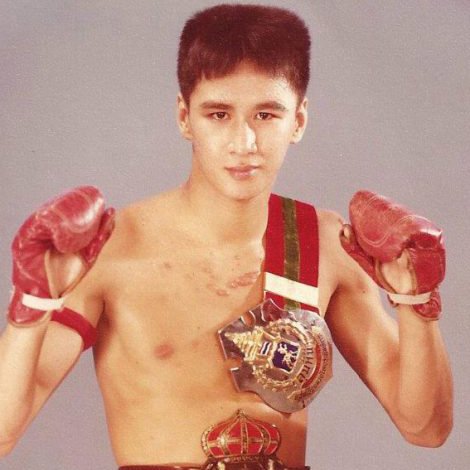
-
Can't speak as a fighter, but as an observer, especially for westerners, training & fighting is a self-disciplining act. You are putting yourself through something, and when that manifests itself as something like low-body fat, and exposed muscularity, it makes sense that that is part of the meaningfulness of doing that. It also helps that big cutting is seen as a way of gaining advantage in matchups, so if you win that way, it makes sense for it to add to the meaningfulness of the training & cut. But, you are right, it does detract from just becoming the best fighter you can be, developing the skillsets to win in fights closer to your walk around weight, etc.
-
There is a very strange experience, drifting slowly through this photograph as the faces of the fighters and krus of the Dejrat Gym in the mid-90s. Just seeing the photo as it was on the wall would never elicit this feeling. Even standing before it, there is very little psychology, very little sense of individual histories. Rather, one might get a sense of a moment in history, this history, this gym. But, as the screen pulls across these faces the entire photograph opens up. You can see and feel the differing disposition of each man or boy, the qualities of their nature, as they face the hardness of the art and sport of Muay Thai. They are all differing materials, exposed to the same forceful wind. There is just such extraordinary variety and humanity here, revealed at this level of a view. In some ways, the documentation of a photograph can always give and bring more, than whatever we imagined of it. This photo has hung there, low on the wall, near the training ropes of the ring, for countless years. An anchor-point to a year back in time. But, here it becomes another kind of thing. A record, caught on a sliver of time, and somehow it all seems precious, and Muay Thai itself of that time feels precious. You can feel it eradiating. Muay photography feels like it should do something like this. Because it is a historical form it should capture more than it seems to, capture in the sense of a net cast, not knowing completely what is in there. We are documenting more than events, or physical dynamics. We are capturing times, and because it is an art, we are capturing times that are layered, sedimented with other times. We do not even know all the things that are in our pictures. This is the original photo: This photo is also part of my photo essay Chatchainoi: The Man of Stone
-
This is one of the most interesting things for us who laud the excellence of the Golden Age of Muay Thai, and the ages that surround it. The very truth of the matter seems to be: Fighting excellence has come out of great cruelty, intense difficulty, and even injustice. We think somewhat glamorously about things like how Dieselnoi's patron was a mafia boss and godfather, in the Hollywood sense, but this is, in a lived reality, a realm of harshness and crime. The romance we have towards traditional hierarchies include also injustices, and dictatorships in life. Muay Thai (as with so many fighting sports in the world) likely laundered not only slews of monies (gained from cruelty & suffering), but also social statuses. This is the nature of it all. It might be said that it was an immense oppression machine, a compression machine, that produced not only the excellence of these fighters, but also the fights and promotions that produced them. Talking this over with Sylvie, this seemingly inherent connection between cruelty and fighting excellence, historically, makes me value all the more the precious achievements in Self that people like Dieselnoi, and fighters of his age produced. These men fashioned high art, of themselves, in the harshness of opportunity and circumstance. From where we stand now, it seems like the worse thing of all to forget these men, to forget or lose what they created, out of that harshness. It was that medallion of gold that they mined from their flesh, forged into an art and history. When we remember them, when we document them, we extend its reason for being. Dieselnoi once was talking about the differences between his historical fate and that of Samart, in the context of having beaten him in the fight of the year, The Holy Grail of Fights. He says, he would not have wished upon anyone his fate. He explained that in Thailand it's not how you go along, its how things end. Just like in a 5 round fight, it's the 4th round that matters. For someone like Dieselnoi its the ending that matters, for all of us who are seeking to record and celebrate the creations of these men, the excellence they drew out of extremely harsh circumstances, its about fashioning that ending for them, the one that says: It matters. We can do that now.
-
A few extra thoughts and context on this historic moment. Noteably, not only is there a female fight on this card, but also keeping with the modernizing, internationalizing brand of this promotion, so are 3 round fights, somewhat in echo of the Entertainment Muay Thai promotions in Thailand like Superchamp and Muay Hardcore, which have actually featured female fighters like Sawsing and Dangkongfah as headline stars. Which means that this 3 round, action-oriented promotional style is in some degree also entering the Lumpinee ring for the first time. The female fight will be 5 rounds, and one imagines it will be scored in a traditional way, as will the other 5 round fights on the card. The 3 round fights serve as something of a pre-lim. What makes this of interest is how this is a kind of mashup, or integration of trends that are facing Muay Thai, and that it is being done under the Lumpinee auspices, in the Lumpinee Ring. The GoSport promotion seems to have its eye on this more modernizing style, featuring young announcers that speak in Thai, English and Chinese (if I recall), and appears to have plans to stream fights through their website, perhaps with a much greater emphasis on eventual non-Thai physical attendance (part of the anti-gambling aims of Lumpinee). The movement towards opportunity for women in the Lumpinee ring cannot be completely separated out from these larger trends, as promotionally they seek to bring traditional 5 round fighting together with female fighting and 3 round fighting as well. There is no doubt that the Entertainment forms of Muay Thai, including those of ONE, MAXX and Channel 8, have inspired these changes, there is no telling how this might play out in terms of scoring, which is where traditional Muay Thai and Entertainment Muay Thai diverge. Also worth noting, the "first fight at Lumpinee" honor was given to Sanaejan and Buakaw, two Thai female fighters. It was more than fitting that it was two Thai female fighters to hold this technical honor. In that fight as well a WBC World Title fight was put at stake. It seems that promotionally the relationship with the WBC has broken down, and the higher-profile "World Title" plans for female fights at Lumpinee may have been stalled, perhaps to be picked up by new agreements. Not that titles particularly matter, but in the Thai promotional world they are admitted signatures of history and importance, as New Lumpinee is working to position itself authentically, but also innovatively, in Thailand's present day landscape. The WBC had seemed to be running in parallel to Lumpinee developments, developing a researched and frequently updated international ranking system to support those coming title fights. This meant that organized weight classes and rankings would have been at play in deciding which women fought at Lumpinee, somewhat mirroring the tradition of male fighting in the stadium. Interestingly, this concrete 1st of two women fighting in the Lumpinee ring itself, will be accomplished between a westerner and a Thai female fighter.
-
[Update edit Nov 8: This fight to have been rescheduled for November 13 see source, it was at first set for November 6th. But with some disappointment, the card which previously held this fight to be a full 5 round fight, now is listed as a 3 round fight, which certainly alters some of the feeling of what I've written below. The fight will not be a traditional full rules 5 round Muay Thai fight.] [Update edit: Nov 14: The full fight video is posted below. The 3 round fight was changed again back to a 5 round fight, but at least one of the fighters did not know it was 5 rounds until the end of the 3rd round.] While some coverage of the Sanaejan vs Buakaw fight expressed the idea that it was the first time women had fought "at" Lumpinee stadium, it unfortunately due to COVID restrictions at the time did not occur "in" the stadium, and even more importantly IN the ring of Lumpinee. It was a significant step toward integration yet it occurred in a temporary studio ring in the parking structure next to Lumpinee Stadium, in keeping with Bangkok requirements that fights be unenclosed. What that fight represented as a first really was the fact that the Lumpinee name was attached to a promotion featuring female fighters. A huge first - though there have been unconfirmed claims of female fights at Lumpinee, I believe in an alternate ring in the late 60s - for women to be represented in this way. But, historically the more concrete and stigmatizing barrier to women fighting at Lumpinee stadium were beliefs that surrounded the blessing of the ring itself. Sylvie did a good piece on this prohibition here. The prohibition was not that women could not fight on Lumpinee owned land, or under the auspices of its promotion. It was that they could not physically enter...or even touch the Lumpinee Ring, for fear of pollution. (I suspect that the increased intensity of prohibition from entering the ring to even touching the ring may have been due to western tourists over the decades coming closer to the ring physically, though this is just a guess. In the video record you can see female gym owners in the Golden Age, perhaps in a break with decorum, come up to the Lumpinee apron and lean or pound on it, yelling at their fighters.) In any case, when female fighters actually ENTER the ring, this is the historic moment. This moment confronts the very well-defined and belief bound line that separated the genders. This fight, between Celest Hansen (AUS) vs Nongnook R. R. Gila Khorat (THAI), is the anticipation of that crossing. This will happen without audience present, with some COVID restrictions still in place. Things like fight promotions do change very quickly in Thailand, so hopefully this Nov 6 event happens as scheduled, but it does seem women actually fighting not only in the stadium, but IN the Lumpinee Ring is something that is about to occur. I would be very curious as to how the issue of the blessing of the ring and the long-held beliefs that barred women have been adjusted to. Is the ring no longer blessed in the same way, with the same practices? Many blessed rings throughout Thailand allow women to enter their spaces, but Lumpinee may have undergone specific more orthodox rites. At the very least we are seeing a shift in beliefs and opportunities, and the way that gender itself is regarded in Thailand's Muay Thai fight culture. Other articles written by Sylvie on women and Lumpinee: Women in Lumpinee, Thai Female Fighters in the 1990s or my earlier thoughts: Can Bleed Like Man: Lumpinee, Muay Thai, Culture Navigating Western Feminism, Traditional Thailand and Muay Thai [Edit in a historical clarification: Nongtoom Kiatbusaba, The Beautiful Boxer, famously and historically was the first transgender fighter to fight at Lumpinee stadium in 1998, presenting as male, and Angie Petchrungruang in 2017 was the first, visibly presenting as female, transgender fighter at Lumpinee Stadium. Both were allowed to enter the Lumpinee ring because they were regarded as male by the establishment, under the system of beliefs that prohibited women. The Lumpinee fights of both women were steps to today's integration of cis women in the Lumpinee ring.] If you want the latest in Muay Thai happenings sign up for our Muay Thai Bones Newsletter
-
TANGENT This account of Caipoeira instruction in Brazil reveals a program of imitation and more importantly memesis in social transmission not very far in principle from kaimuay osmosis in traditional Muay Thai. Click the link above for more extensive citations, but this section talks about how physical imitation alone (mirroring actions consciously) makes a very poor conduit for the passing of cultural knowledge surrounding an embedded practice. This suggests that rote drills only provide a very narrow band of what makes up an art: In contrast to more mechanical copies of physical actions, Bourdieu's generative habitus (which would be buried in the training melieu) exists as an explanation for the feel of an art or practice, likened to the style of painters, or handwriting:
-
TANGENT This from Making Knowledge: Explorations of the Indissoluble Relation between Mind, Body and Environment edited by Marchand, the first chapter discussing the embodied knowledge of Capoeira in Brazil, a fighting art that comes closer to dance than most. The emphasis is on the largely instruction-less, mimetic transmission and creation of the knowledge and art. Without the concretizing ballast of thousands of full contact fights as laboratory, Capoeira may bring forward the social creation of a fighting art, having parallels to aspects of Thailand's Muay Thai training (socially created, often mimetic in transmission). Aesthetics and efficacy in tension. If there is one theme when we interviewed legends of the Golden Age and before, it was that nobody actually taught them their style, they created it through social integration in the kaimuay, play (endless sparring, clinch) and by watching. Sirimongkol (FOTY 1972) told us that when he arrived in Bangkok from the provinces he didn't even really know how to fight (a common refrain, but likely a purposeful exaggeration). He learned by his account almost exclusively by watching and imitation, or as Bourdieu would say, mimetic transmission. Continuing on in the essay, making the distinction: In my article The Slow Cook vs The Hack Thailand Development, I discuss the metronome effect in the training in a Thai kaimuay, the way that practices and habits of Muay Thai transmit themselves across the social space, almost unconsciously. The nature of this kind of development is a focus of this cited article, an excerpt a little further along. The tension in the theory, as the author examines the teaching and training of Capoeira (which appears in some ways quite different than that of traditional Muay Thai, which is not master-centric, despite sharing non-verbal components), is between just how much skill development is is conscious or unconscious. Bourdieu's concept of an unconscious habitus which acts as the generative grammar of a space point to hidden aspects of kaimuay training, such a socially correct hierarchies or gendered expectations, which underwrite the more fulsome aspects of technique and skill acquisition in Thailand's Muay Thai. The generative habitus, likened to the painters style, a person's handwriting, a way of being of a class of people, helps explain the transmission of aspects of an art not contained in physical technical imitation: Capoeira's malicia is compared to Bourdieu's habitus, an all pervading vision of the subject and the world, positioning and conditioning the art. This is not too different than the acquisition of embodied principles of Muay Thai in the kaimuay, aspects such as auton, ning, ruup, haut, various rhythms and dispositions that communicate the ethos of the art, and even more particularly the ethos of a gym:
-
One fundamental note, it occurs to me to add, is that when we see and feel the wobble our immediate thought is that something is wrong. And there are good reasons for this. It usually means that something is amiss, some piece of balance, or a placement of weight, or even timing. Sure. But, there is another thing going on when the wobble presents itself. It means that the student, the fighter, is risking the wobble, feeling and exposing themselves to the metastability, and this exposure may very well be the PATH to a refined sense of balance and (meta)stability. Yes, the wobble may be corrected by direction. Put your foot here, be sure to keep your hand up...yes. But ultimately it is about the body engaging with the very instability itself, and finding/feeling the unique ways in which it can ride the line of the wobble. Just as a skateboarder or a surfer does.
-
Much has been made of the role of play in traditional Thai pedagogy. Instead of more rigidly define skills taught mechanically, with precision, a great deal of Muay Thai in Thailand is developed in group experiences, through play and imitation. I've written about this a bit in these two articles: 1. The Slow Cook versus the Hack – Thailand Muay Thai Development 2. Precision – A Basic Motivation Mistake in Some Western Training And relatedly, Sylvie and I have talked about flow state in our Muay Thai Bones podcast, episode #2 This post is about metastable states, and the wobble. You can read the more complete quote from an essay on Simondon, sited at the bottom of this post, but this section below presents a beautifully simple illustration of what a metastable state is. A wobbling bowling pin. It is nether falling, nor stably at rest. It is neither, and in a sense, both. The thread linked at bottom is about Brain Criticality, and the theory that the human brain pursues and exists upon a line that rides between phases, a line of criticality, which is not that different than the metastability of a bowling pin mid-wobble. And, while a bowling pin will not wobble any important length of time, a living system, the human brain, may have evolved to ride on this line of wobble. This is when we get to deeper philosophical ideas, and more practical ideas in skill development. A reason why a system might want to ride the wobble, and not lay in an energy state of stability is that a sunken state of rigidity cannot take in events outside of its structure and framework. A system that has wobble can more readily incorporate unanticipated information, is more readily able to adapt. Buddhism tells us that life is suffering, and that nothing can stay what it is. Everything is in a line of decay. What is this other than the wobble of existence? The critical line of dissolution. The legendary Thai 19th century monk Somdet Doh likened living to falling from a very tall tree. If theories about brain criticality are correct, no matter how simplified you make your life, or complex, the brain will find a critical line in it, like the surfer's line in a wave. I suspect that this is the reason for so much simplification in Buddhistic practices of meditation. They simply experience, strip it down to such bare elements, in order to expose the Nature of that wave, the way the brain will find that line, that wobble. When life (and experience) becomes much more complex, it's much easier to blame (or credit) our states on dramatic moments or events...but, the same line of criticality is likely at work, we're taking the same line on the same kind of wave. This could mean in a very interesting way, that the ascension in fighting skill is a form of meditation. Meaning, it's about seeking that line, the surfer's line, on a narrowly defined wave, a wave that triggers fear, adrenaline, flight, amygdala, shame and pride, drawing on our baser instincts and social relations. The practice is full of techniques, practices, but ultimately what is being sought in that line of criticality. Its for this reason that while the training of specifically defined, and mechanically correct skill-sets (in drills) could very well be advantageous, this isn't really the practice of what elite fighting is. It's not about being able to perform memorized patterns under great stress. Ultimately, it's about finding that line of criticality, a line that embraces the wobble, the way that a fighter can be both stably unstable, such that it can be open to a great variety of information. This is something Sylvie and I talk about as "growing eyes". You cannot grow eyes without seeking the wobble, in your training. Because its about hunting the wobble, gaining a feeling for it, there must be a degree of uncertainty, and in fact often a very high degree of uncertainty...sometimes the bowling pin will fall. The shorthand for this is play. In this way we gain access, perhaps, to the artistic line that combat fighting realistically presents, and why we thrill when we see fighters find it.
-
I suspect that this isn't a conceptual thing, a failure of communication, but rather a feeling thing. It takes time to feel comfortable with contact. An idea might be to create more acclimation friendly experiences to start out with? You can explain to them why closer is better, but until they feel it it won't be real. You can for instance modify the drills to include light punches on the arms, instead of the head, where the point is to actually feel (and give) the contact. Just developing a touch, touch, touch experience might open the door to more comfort.
-
A question on Reddit had me compiling a list of fighters or krus in the Muay Thai Library that had a shorter man's style. Here is a preliminary list for everyone: In the Muay Thai Library these are shorter fighters who fought taller opponents, or krus that taught a short man's style. Many of these are legends of the sport. Many of these are pressuring Muay Maat (punch-heavy) fighters. As a shorter fighter it is often advantageous to collapse the pocket, sometimes develop a low kick game: Arjan Metprik (kru of the very tough short FOTY Thanonchai): https://www.patreon.com/posts/48810277 Chatchanoi https://www.patreon.com/posts/57425804 Morakot: https://www.patreon.com/posts/47524832 Pairojnoi: https://www.patreon.com/posts/43891886 Samransak: https://www.patreon.com/posts/38992145 Rambaa: 1: https://www.patreon.com/posts/37838229, 2: https://www.patreon.com/posts/26699042, 3: https://www.patreon.com/posts/13625213 Hippy: 1: https://www.patreon.com/posts/hippy-singmanee-7145938, 2: https://www.patreon.com/posts/14697690 Chamuakphet: 1: https://www.patreon.com/posts/34875441, 2: https://www.patreon.com/posts/22159245 Kongsamut: https://www.patreon.com/posts/kongsamut-sor-76-20147137 Kongtoranee: https://www.patreon.com/posts/18090011 Lakhin: https://www.patreon.com/posts/32055712 Samson: 1: https://www.patreon.com/posts/31628485, 2: https://www.patreon.com/posts/samson-isaan-art-19485162 You'll see in a lot of these fighters they use a lot of weapons, attacking high and low, and try not to stand at distance. A good place to start might be someone like Kongsamut, or if more advanced, someone like Chamuakphet. and tons of Karuhat links here. He fought way up, though he is a very difficult fighter to emulate: https://8limbsus.com/muay-thai-forum/topic/1061-is-there-a-way-to-view-all-videos-by-a-trainer-all-of-karuhats-sessions/
-
The new Karuhat shorts we made are pretty incredible. There's something about them when they are right there in front of you that just is a bit electric, like how he is. In celebration of him, and these new shorts, we're giving away a pair of these. All you have to do to enter is write on this thread what is about Karuhat which makes him like no other fighter. You can writing anything from a breakdown of his fighting style, his techniques, to how he makes you feel as a fan of his muay, or what he means to you. If you follow Sylvie and me you know he means a great deal to us. Anything that substantively expresses or explains his specialness. Please only enter if you are a fan of his. There may be more than one prize offered, but first place goes to the answer Sylvie and I find the best or most interesting. We'll run this give away for about a week. Forums aren't too popular, so there will probably be very few entries, so you'll likely have a pretty good chance to win the shorts! This is in celebration of those who support our forum and longer forms of thoughtful communication. You don't to be fancy in your answer, just sincere and thoughtful. If you are new to the forum your first post may be automatically held for moderation due to anti-spam, nothing to worry about. The shorts are pretty amazing, you can find them here. 100% of the earned profits go to support him, so if you want to buy them in support please do! Below is a quick video of the shorts, followed by some photographs. If you don't know Karuhat yet, you can find all the links to video documentation we've done of him. He is very likely the most documented Golden Age Muay Thai fighter of Thailand, thanks to the support of the Muay Thai Library Project. You can find those links here: And, as always, I'll drop the Muay Thai Scholar footwork edit as a key introduction for those who don't know him. I've watched this thing 100x:
-
It's a very small, sweet set up. Yodwicha is one of the best fighters in the world and he's there, and an excellent teacher. He has lots of experience with helping westerners from his days up at Kem's gym. It will not be crowded, and the krus/padmen should be invested. Yodwicha's wife who runs the gym is really sweet, and speaks English, so in a small gym that's a big plus. The only question is the location which isn't in the center of BKK. If you end up there let me know how it goes, I'd love to know.
Footer title
This content can be configured within your theme settings in your ACP. You can add any HTML including images, paragraphs and lists.
Footer title
This content can be configured within your theme settings in your ACP. You can add any HTML including images, paragraphs and lists.
Footer title
This content can be configured within your theme settings in your ACP. You can add any HTML including images, paragraphs and lists.
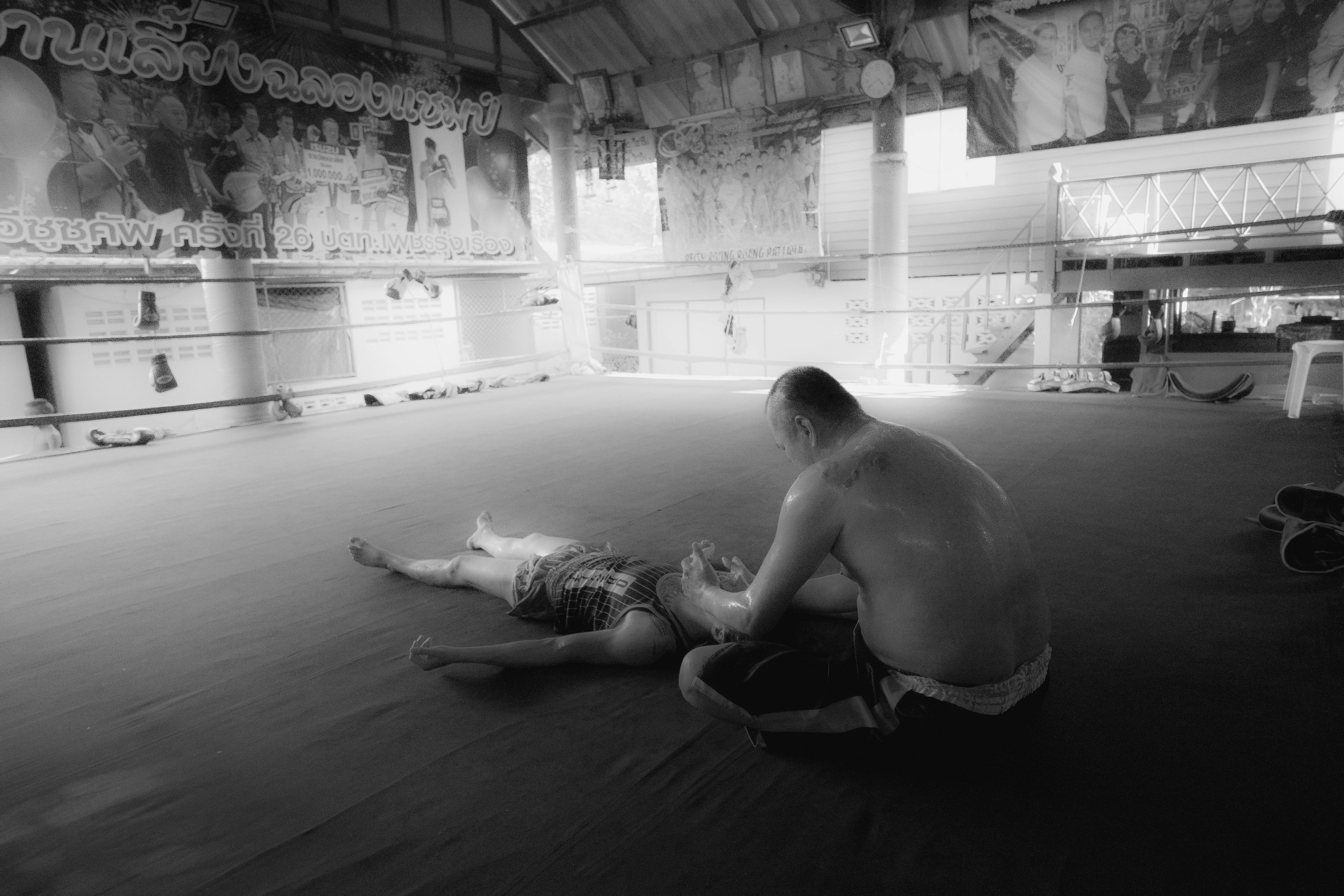


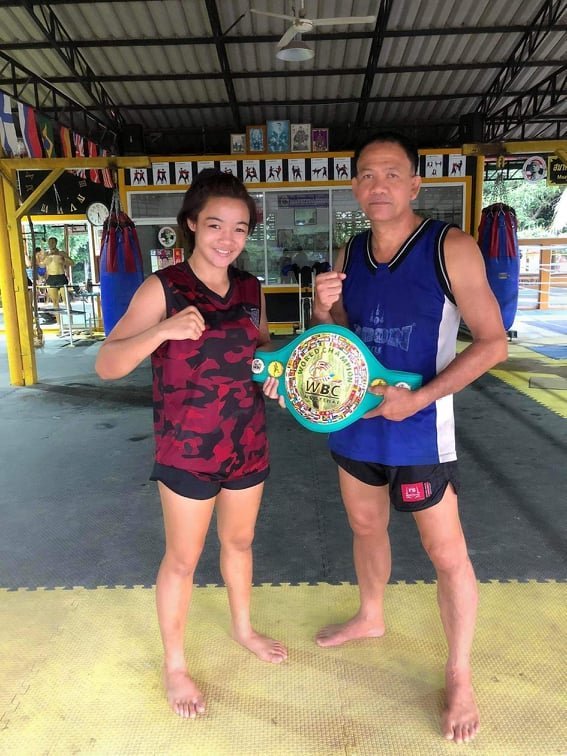
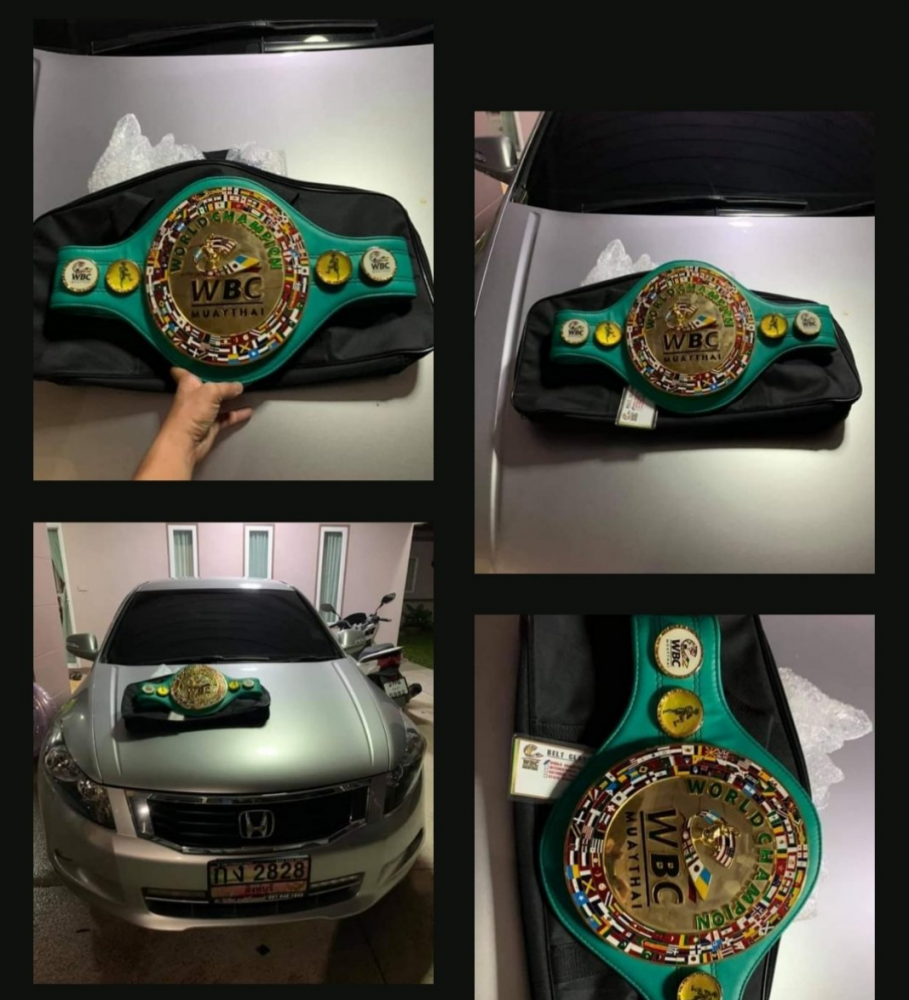
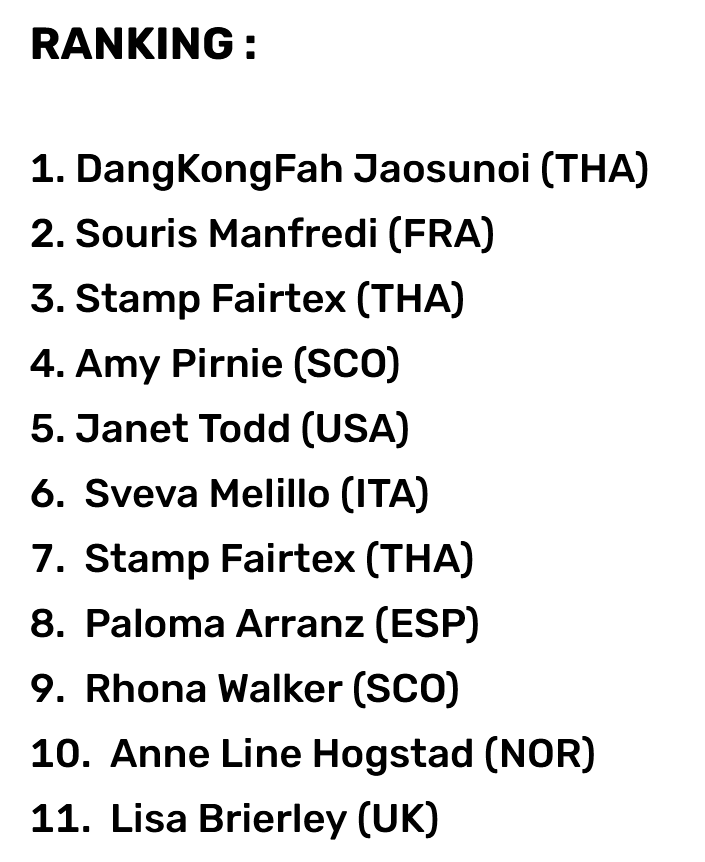
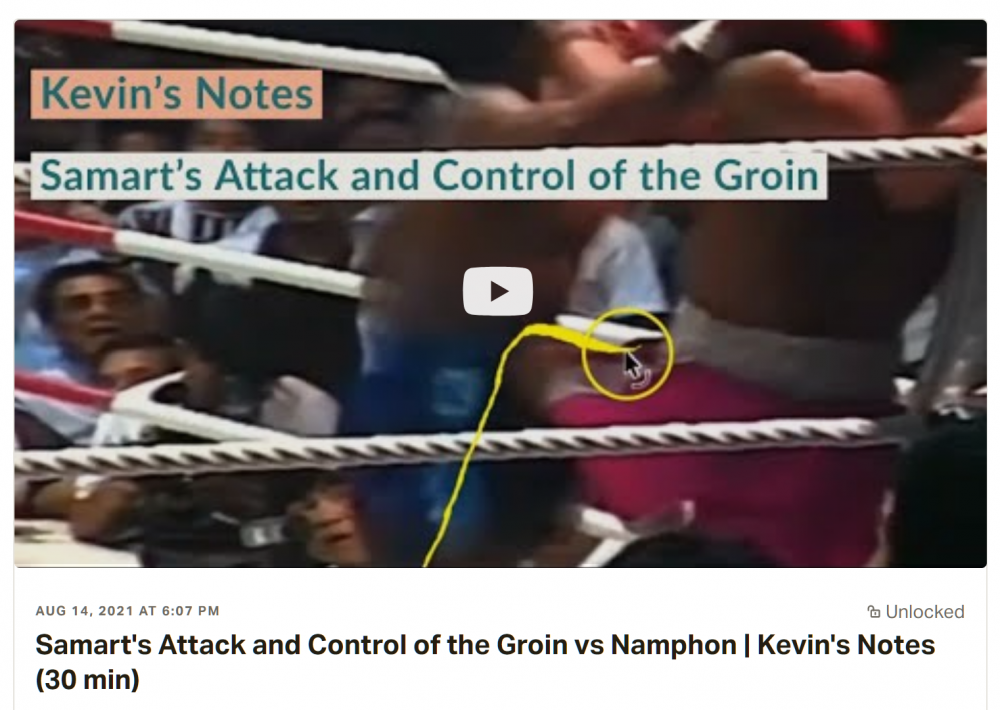
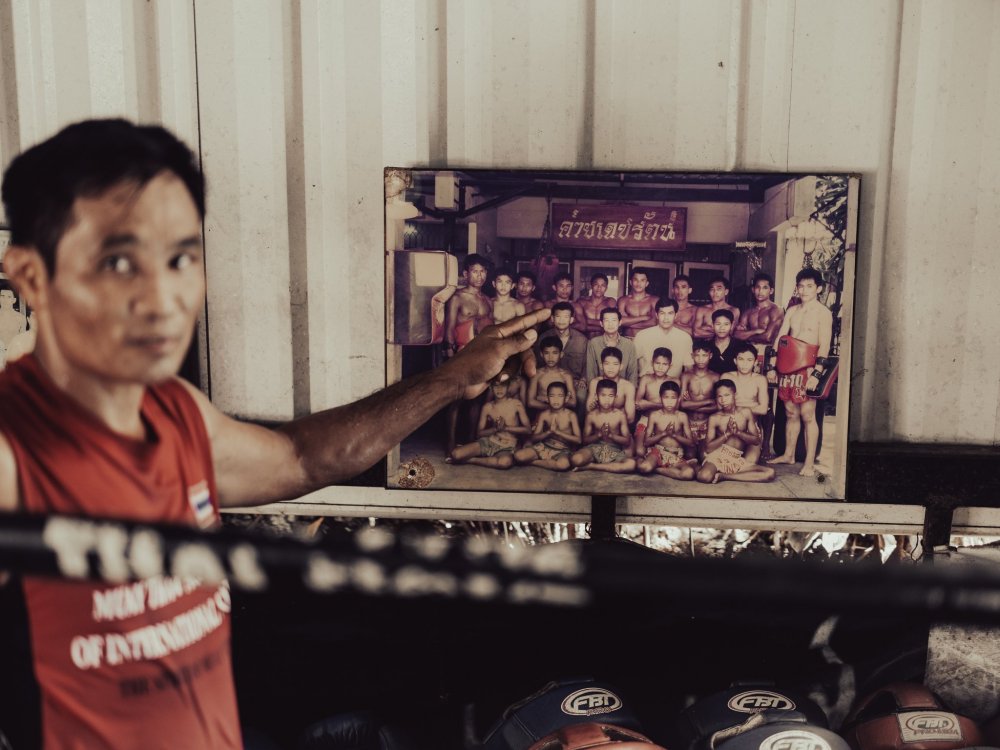
.thumb.jpg.a9c643f4e12641f7dfd8ec8f84e9bf4c.jpg)
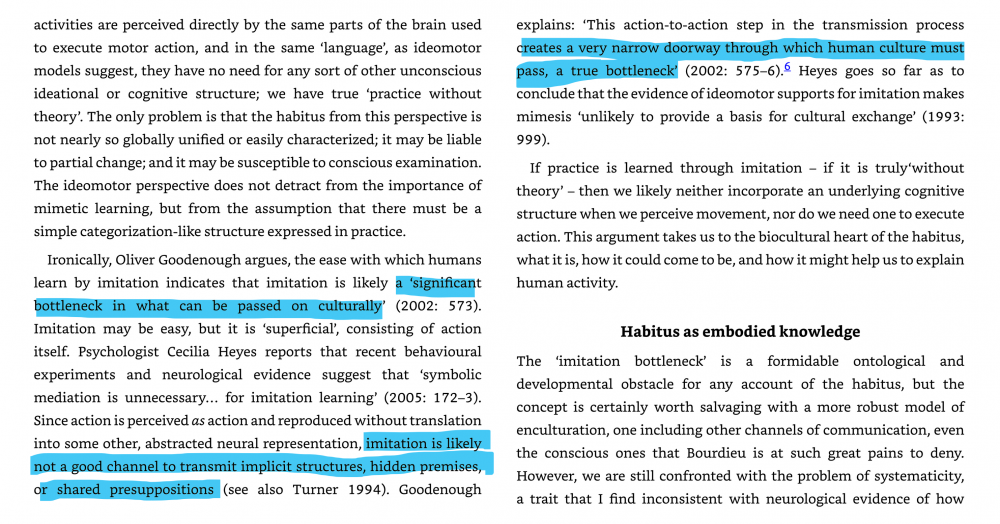
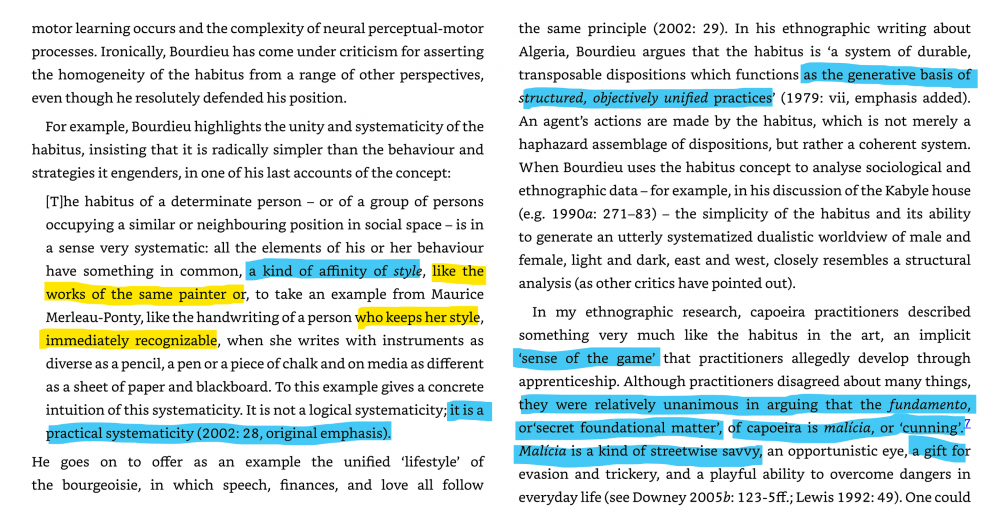
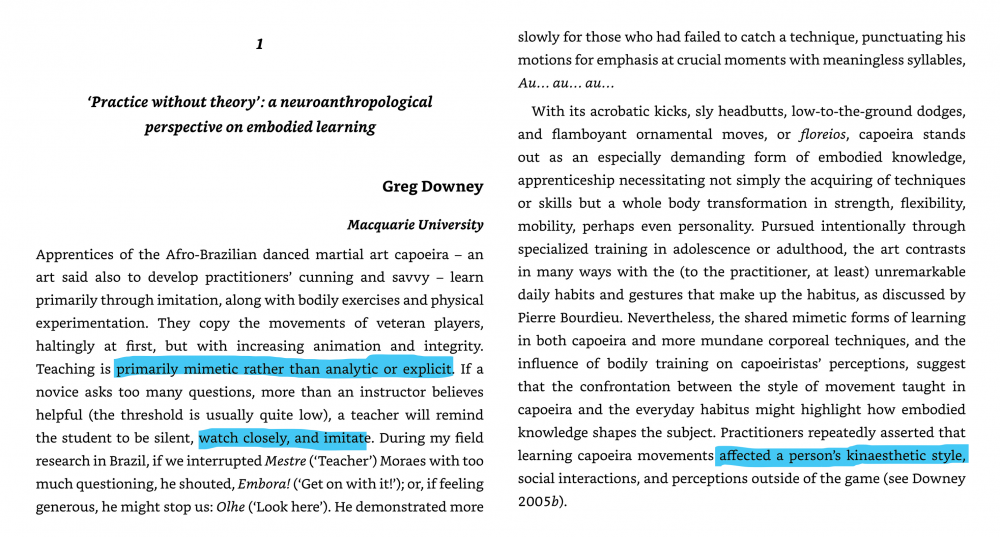
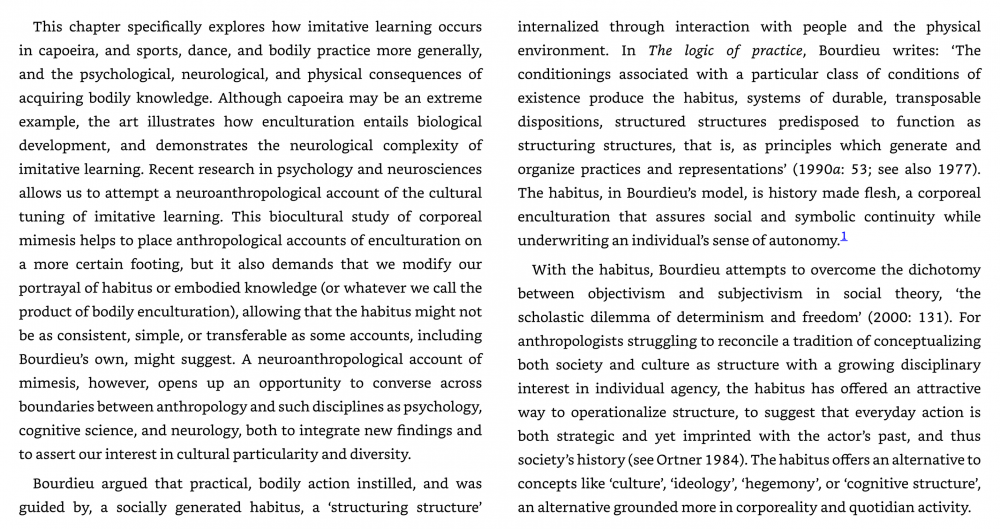
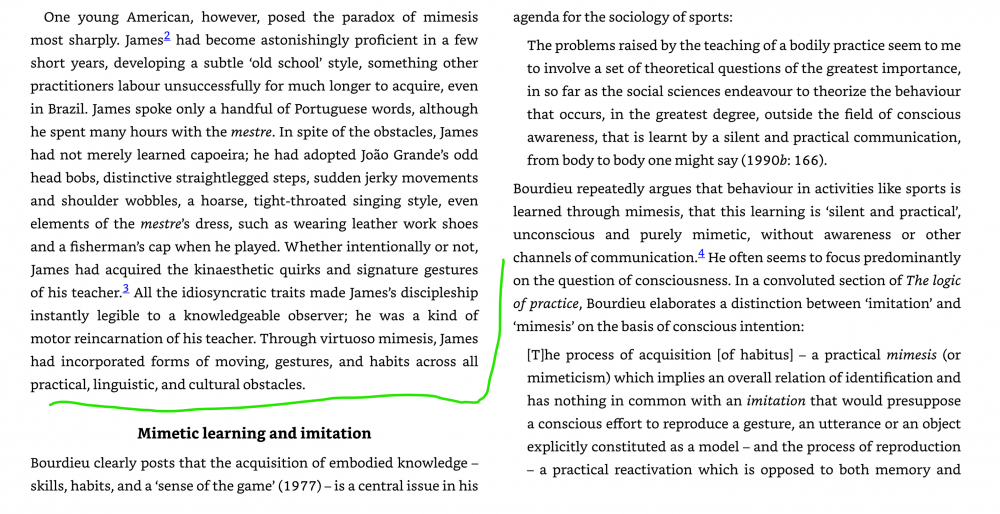
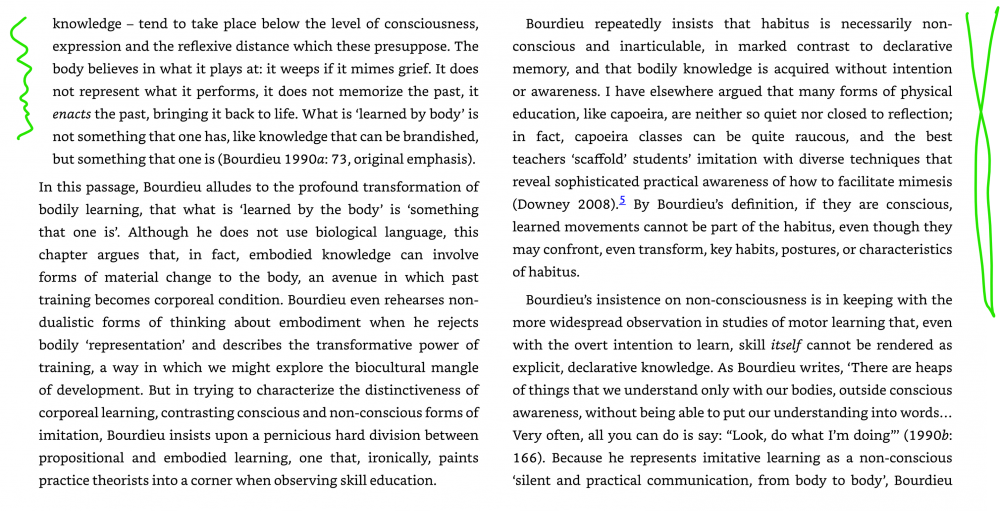
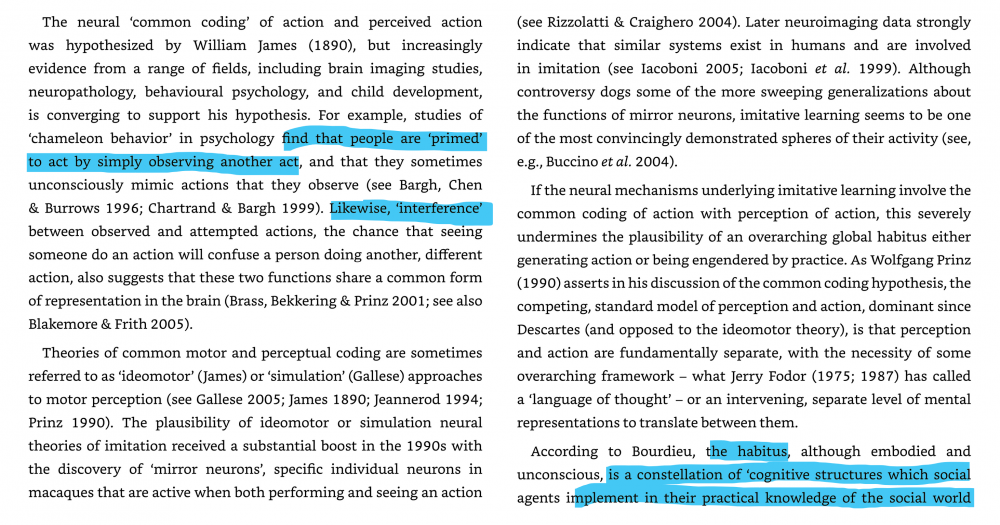
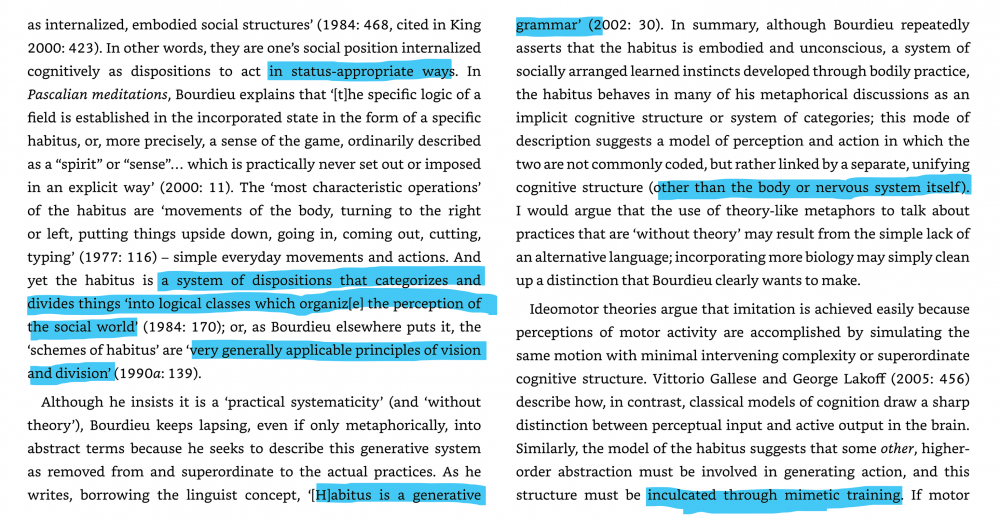
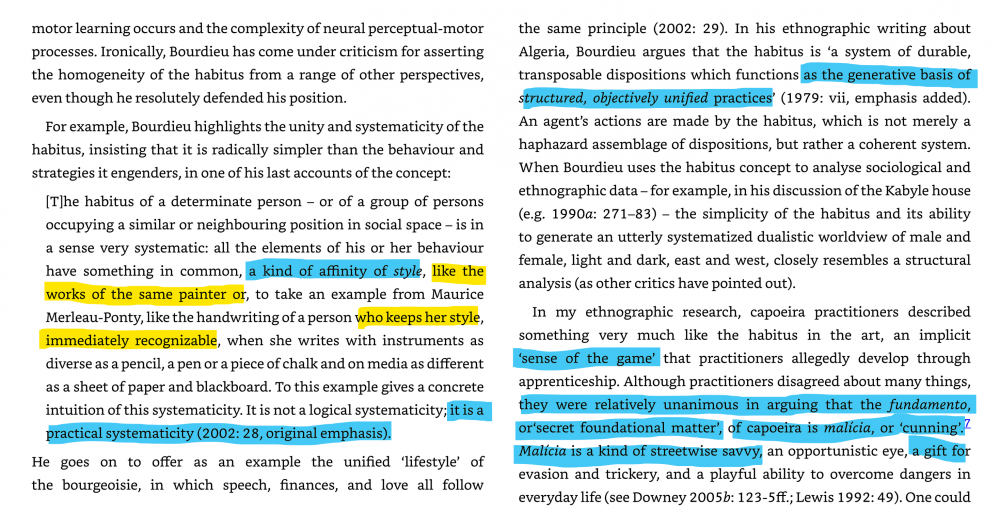


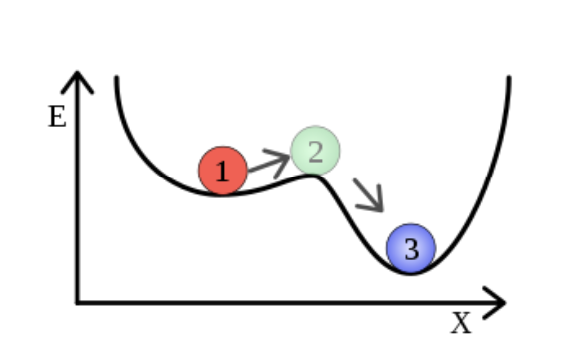
.thumb.jpg.17f9b17116dfa262cc67849f8ae08b42.jpg)
